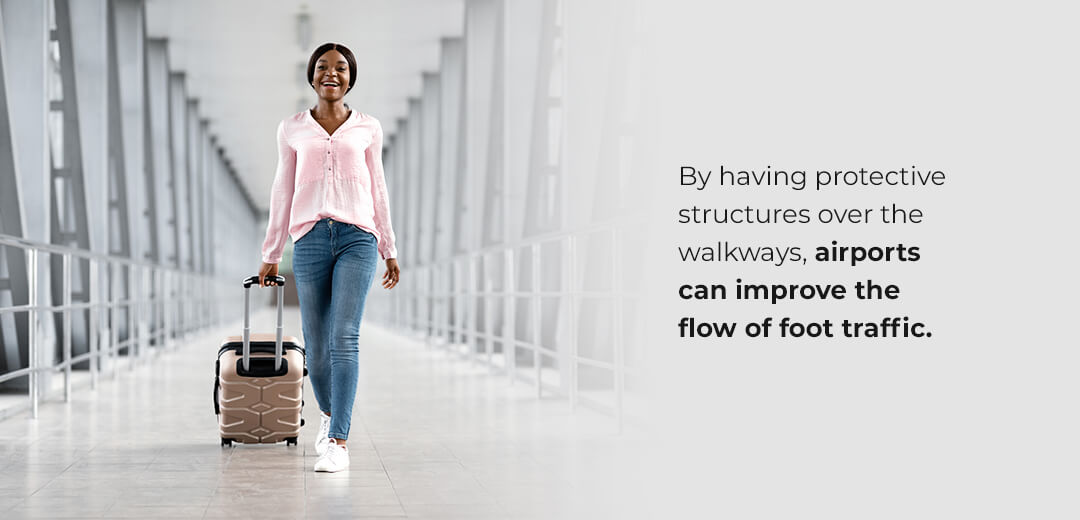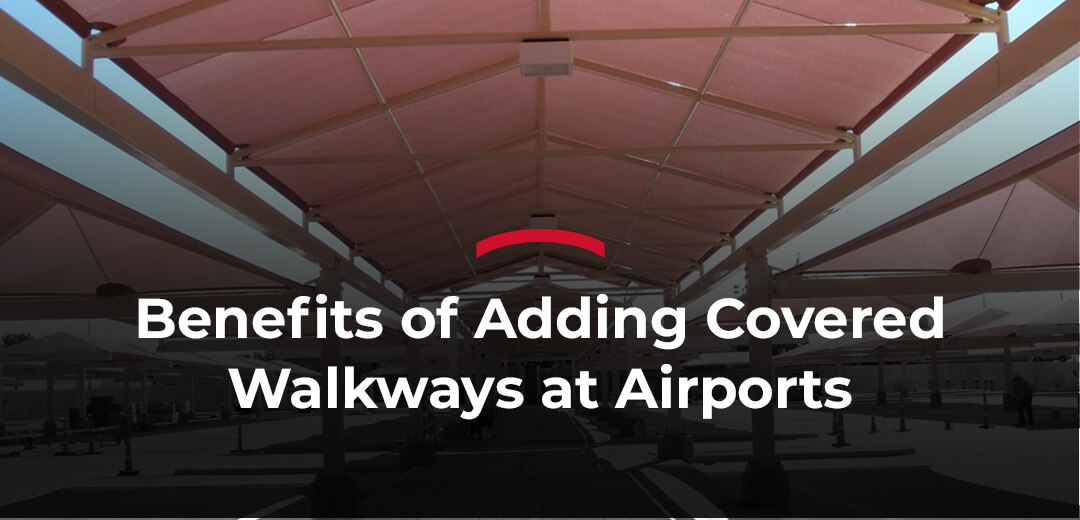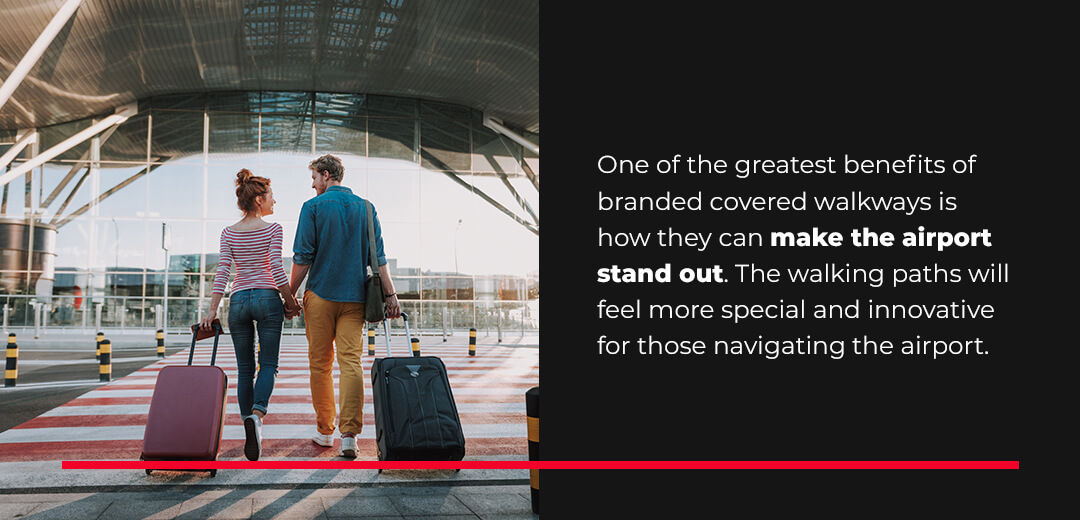Imagine finally finding your luggage on the baggage carousel after a long day of travel. You walk out the airport’s doors and quickly have to shield your eyes from the sun so you can try to find your ride along the drop-off lanes.
As you pace up and down, looking for your car, the afternoon sun starts beating down on you. You start feeling hot and uncomfortable. By the time you spot your ride, you’re irritable. The beginning of your trip is off to an unfavorable start, and your key memory of the airport is a negative one.
Now, imagine that same scenario with the addition of a covered walkway. You step out the airport doors without the sun in your eyes. You see the passing cars in the drop-off lane with ease. You walk around, feeling comfortable and shaded by the afternoon sun. You maintain that comfort and are cool and dry by the time you spot your ride, feeling good about the time spent at the airport.
This is just one example of the many ways installing protective structures over an airport’s outdoor walkways can be advantageous for travelers and airports alike.
Read the full article or jump to a specific section:
- What Is the Purpose of Covered Walkways
- Benefits of Covered Walkways at Airports
- Where Can a Covered Walkway Be Used?
- How Can VPS Help?
What Is the Purpose of Covered Walkways?
Covered walkways refer to outdoor passageways that have structures built over them. These structures provide additional shelter for those walking underneath, allowing people to be more comfortable as they travel between buildings or from a building to their cars.
These structures consist of durable frames and overhead canopy solutions that help block the elements and keep travelers comfortable. Businesses can find covered walkway solutions in a wide range of styles and shapes.
A covered walkway’s ultimate purpose is to provide a more pleasant experience while walking to and from a location. Many businesses and organizations, from churches to hospitals, can benefit from installing these protective structures over their outdoor walkways.
Airports can benefit from installing canopy solutions on their premises. Travelers and airport staff are constantly moving from point A to point B. Whether they are walking to a new terminal or catching their car at a drop-off lane, having some protection from the elements can elevate customer and staff experiences.
Benefits of Covered Walkways at Airports
Airports can improve their facilities and transform traveler experiences by installing protective structures over outdoor pathways. Explore the many benefits of adding covered walkways to airports:
1. Protect Pedestrians From the Elements
One of the most significant benefits of having covered walkways is the protection they can provide against various elements, like UV rays. Pedestrians can move about with added comfort when they have shade from the sun and coverage from undesirable weather.
Airline passengers can enjoy getting from place to place without worrying about getting soaked by the rain or scorched by the sun. Instead, they can travel around the airport with more comfort and convenience. Protection from the elements can improve visitors’ overall experiences and attitudes toward the airport.
2. Help in Reducing Fall Risks
Another advantage of incorporating covered walkways at an airport is their help in reducing the risk of falls. Thanks to the protection they provide against inclement weather, travelers will have to deal with less undesirable conditions as they move around the airport property.
Reduced fall risk is especially important in the midst of winter weather and hail. Added coverage can keep pathways from getting overtaken by snow or ice. Those walking to catch their cars can navigate the path with fewer concerns about their luggage getting wet or losing their footing due to slipping hazards.
3. Improve Airport Foot Traffic Flow
By having protective structures over the walkways, airports can improve the flow of foot traffic. These structures can provide distinct paths for traveling around the premises and encourage people to stay in designated pedestrian areas.
Visitors will also have a better understanding of where they can and cannot walk. If there is a structure keeping them dry or shaded, they will be less likely to venture out into unprotected drop-off lanes or roadways.
Covered walkways can boost airport safety and give travelers guidance on what route they should take while maneuvering outside of the airport’s buildings.



